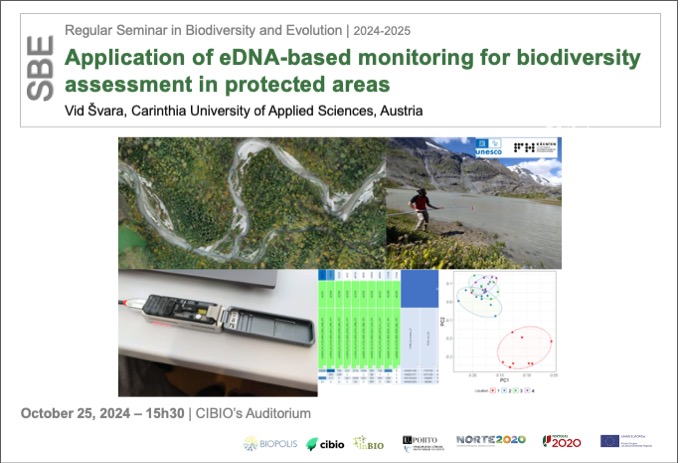Application of eDNA-based monitoring for biodiversity assessment in protected areas
Vid Švara, Carinthia University of Applied Sciences, Austria
October 25, 2024 | 15h30 | CIBIO Auditorium

In order to comprehensively monitor species diversity and optimally plan the management of protected areas (PAs), the acquisition of precise information on species communities is essential. The demand for biodiversity data is growing rapidly, especially in light of global change, biodiversity decline, and increased nature protection efforts. At the UNESCO Chair on Sustainable Management of Protected Areas at Carinthia University of Applied Sciences in Austria, novel technologies are combined with traditional approaches to foster accurate biodiversity assessment in PA monitoring. Methods including remote sensing, audio and video trapping, AI algorithms, and molecular methods are being applied for diverse biodiversity targets and across ecosystems. Recent progress in application of molecular methods, especially taxa detection using metabarcoding and eDNA sampling, is revolutionizing how biodiversity is being monitored. The UNESCO Chair is supporting the application of novel biodiversity assessment in protected areas together with their managers. In frame of the project BioMONITec, environmental DNA (eDNA) sampling was tested at a wetland to detect invertebrate taxa during a one-day BioBlitz. Results were compared to morphological species identification. In the Interreg Central Europe project Humanita, soil eDNA was sampled with help of citizen scientist to detect invasive plant species at a Geopark site visited by hikers and mountain bikers. Finally, the project ProTecteDNA aims to develop and implement novel eDNA-based metabarcoding for biodiversity assessment in different freshwater habitats in PAs, using a portable monitoring toolset. The project aims to make novel technology more available for biodiversity assessment in PAs locally and globally.
More information here